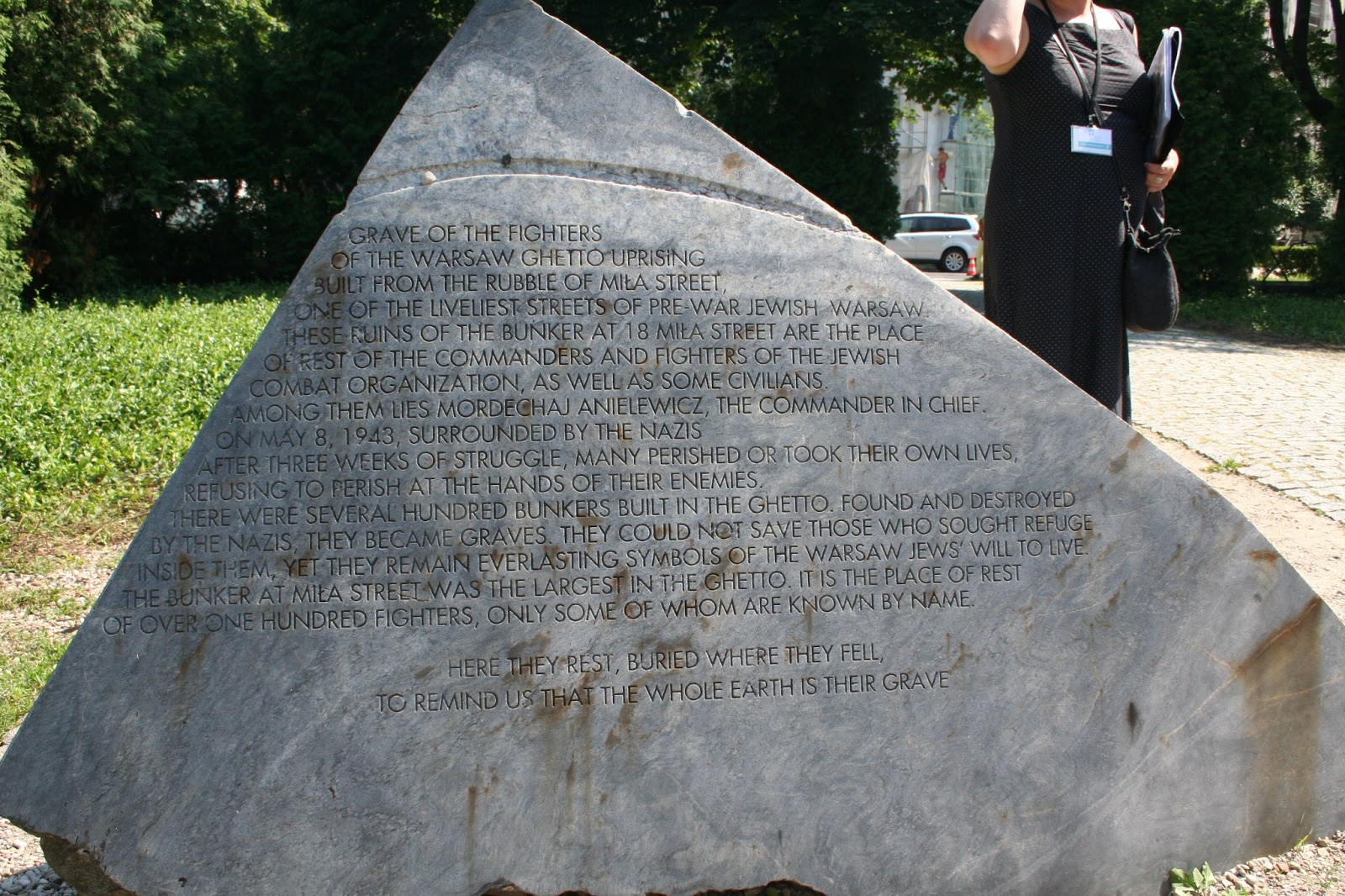In Warsaw there is a monument dedicated to the Ghetto Uprising that occurred in 1943. It was built only a few years later in 1948. The Monument to the Ghetto Heroes was built with leftover supplies that were meant to be used by the Germans to build a monument for Adolf Hitler to celebrate his wartime victories.
The front of the monument (see below) is called “The Fight” and it shows the rebellion that occurred. Innocent civilians are running from the burning ghetto in the background.
.JPG) |
| "The Fight" |
The reverse side of the monument is called “Walk to Death” and it shows the suffering the Jewish community had to endure during the war.
 |
| "Walk to Death" |
Another important monument is the Bunker
Memorial at 18 Mila Street (18 Pleasant Street) in Warsaw. A house was once here and it was used to hide Jews
and Jewish militia who were fighting back against the Germans.
 |
| Bunker memorial |
During the Ghetto Uprising, it was
attacked for weeks on end. Instead of giving their lives to the Germans, many
Jewish fighters committed suicide. This land and memorial have been saved to preserve the memory of
those who fought and died.
The Willy Brandt Memorial is also located on the same property of the Warsaw Ghetto Heroes Memorial. This honors West German Chancellor Willy Brandt’s visit to the Heroes Memorial on December 7, 1970. Brandt was a German socialist who escaped from the Nazi regime and was in exile from Germany during WWII. During his 1970 visit to the Ghetto Heroes Memorial, he kneeled down and prayed for those who died during the war.
 |
| Willy Brandt Memorial |
During our visit to the Oskar Schindler Factory Museum in Krakow, we came across a room in the building that had the walls pasted with the words and memories of those who lived during the war. This room felt oddly silent and empty, even though there was music and people were inside.
 |
| Caitlyn Ebert and Kaleigh Ratliff inside the Room of Choices |
This room is called the Room of Choices. It makes one reflect on what happened and how other individuals felt during that time.
The photo below does not show a monument. Yet nearly seventy years after the war this place still overwhelms all who visit. This room is not just any room. This is Auschwitz-Birkenau.
 |
| Barracks at Birkenau |
Here is where many inmates had slept. People would sleep in groups of 3-6 per “bed,” being piled up as high as the room would allow with nothing but hay. This particular room was meant to be a stable for horses but was converted when the camp needed more room for the mass amount of people living there. The fireplace never was used because resources were thin, so at most the fireplace was used for sitting on and to give false hope to those living there.
Stay tuned for more blogs from Daemen students about our experiences here in Poland and also in Ukraine.
Tyler Vanice
Stay tuned for more blogs from Daemen students about our experiences here in Poland and also in Ukraine.
Tyler Vanice

No comments:
Post a Comment